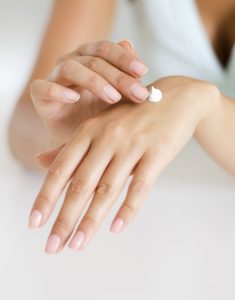When considering how to look after your skin whilst moving around a lot, remember this; traveling skincare has to be different than home skincare. As your skin faces quite a few changes as you’re traveling, you must accommodate it by slightly altering your routine, also. With that in mind, here are some tips to make your next holiday skin-friendly!
Prepare ahead
Consider the trip to come. Are you going to be on a plane? Moving into a dry climate? Prepare your skin a couple of days beforehand and consider visiting a dermal clinician to refer you to the best travel products for your delicate face. Stir lightly and apply a hydrating mask (such as our Coconut Honey Mask). Even if you have oily skin, realize that the drying effects of traveling can cause your skin to overreact.
Package carefully
Do not forget that your skin will be under stress when traveling. That means any potentially irritating products will need to stay home–such as harsh cleansers, hydroxy acids, peels, resurfacing treatments, etc. You can even leave behind any technological gadgets such as skin scrubbing or laser healing items as they may become too bulky for your trip. Take along travel sizes of your gentle cleanser (try our Aloe Herb Facial Cleanser), your regular moisturizer, and a serum, which can allow you to counteract dryness (our Herbal Facial Oils work great!). Add in something to eliminate impurities (such as our Purifying Mud Mask or Dead Sea Scrub), your favorite eye cream, and a hydrating mask (such as our Coconut Honey Mask).
 Contemplate going barefaced
Contemplate going barefaced
Apply as little makeup as possible on your travel day. Makeup can settle into pores and hang onto germs, which you don’t want in your skin. Foundations may also be drying. In case you must meet up with people instantly once you arrive, take along a small bag with a cleanser, moisturizer, foundation, and lip color which you can apply from the plane bathroom before landing.
Counteract travel dryness
Apply your usual moisturizer before leaving (oils are best, as they penetrate deep into your pores), look at using a freshening mist along the way. It will help keep your skin hydrated in moist conditions, and might mean the difference between coming appearing dried up and dull or looking fresh and vibrant. The ideal mist can also give your skin with protective antioxidants.
Shield!
Do not forget your sunscreen! Even if you’re going to be within a plane daily, your skin requires the protection of a great sunscreen to help it withstand damage from UVA rays coming through windows.
Take along some blotting fabrics
If you have oily skin, then bring some blotting fabrics with you, which you can use while traveling. Oil-blotting papers can decrease oil and are far better than regular tissue, which may leave residue on your skin.
Keep your hands off your face
This is one of the biggest mistakes we could make when traveling. Particularly on airplanes or in public areas, we come in touch with a great deal of germs, so if we touch our faces, we are transmitting those germs on the skin, where they hang around to cause problems (such as pimples) later. If you have to touch your face, use a tissue or oil blotter as a shield between your hands and your skin.
Drink water
Ditch the sugar-laden juices and sodas and drink water instead. It helps keep your skin hydrated from the inside out.
And do not forget the eye cream!
Ice beneath the eyes. Under-eye circles are the bane of many a traveler. If you discover you have already developed them on the plane, ask the airline for some crushed ice and a towel. Apply it like an ice pack under your eyes. You may repeat this procedure before bed the first night to wake up looking more refreshed. Do not forget to use your eye lotion frequently to counteract under-eye dryness and reduce the appearance of fine lines.
Eat hydration
Since dehydration is the most frequent problem for skin when traveling, consider “water” when choosing your foods. Juicy fruits and veggies, soups, and fresh greens function best. Think cucumbers, watermelon, pineapple, celery, radishes, tomatoes, green peppers, strawberries, grapefruit, cantaloupe, oranges, lettuce, zucchinis, and cabbage.